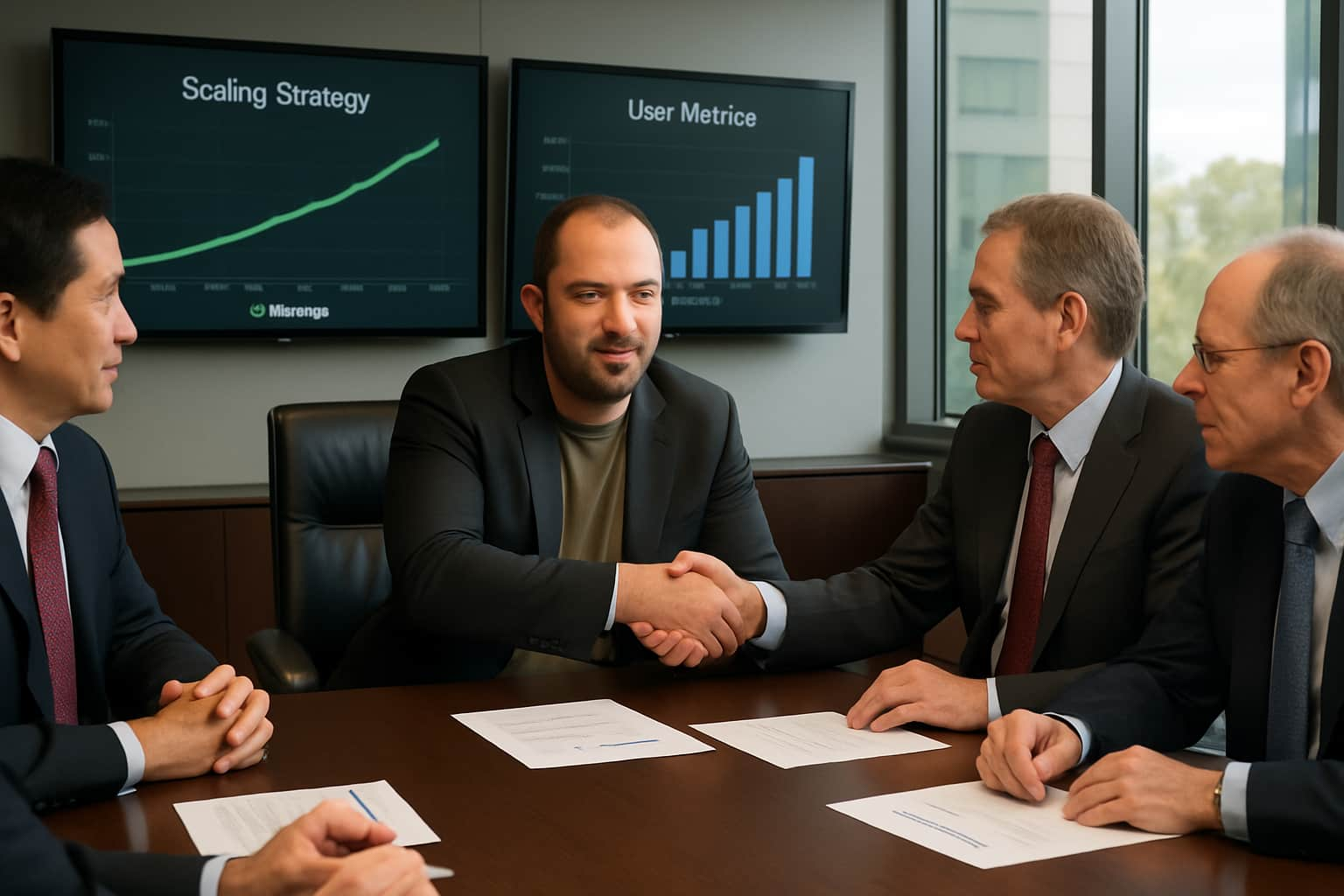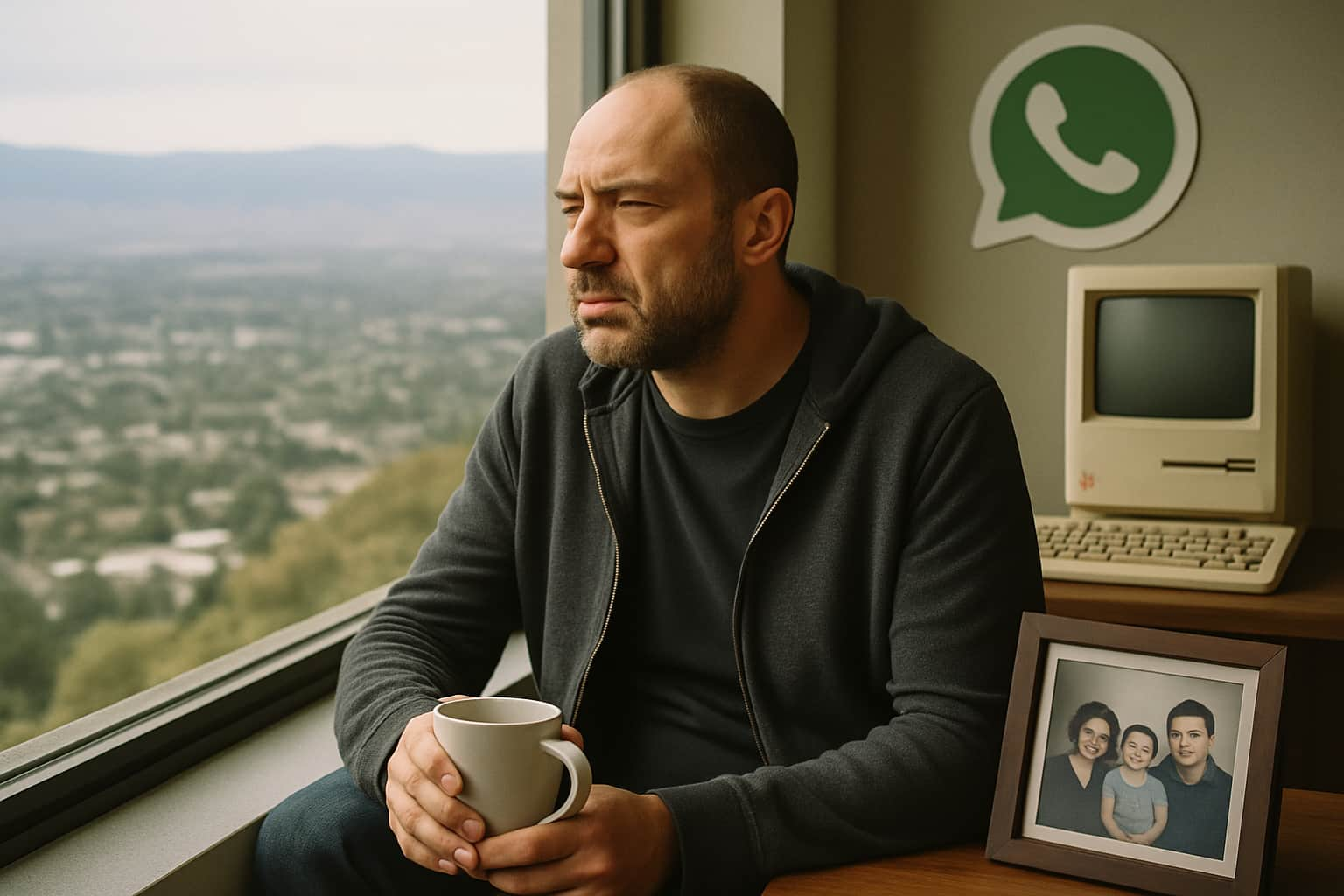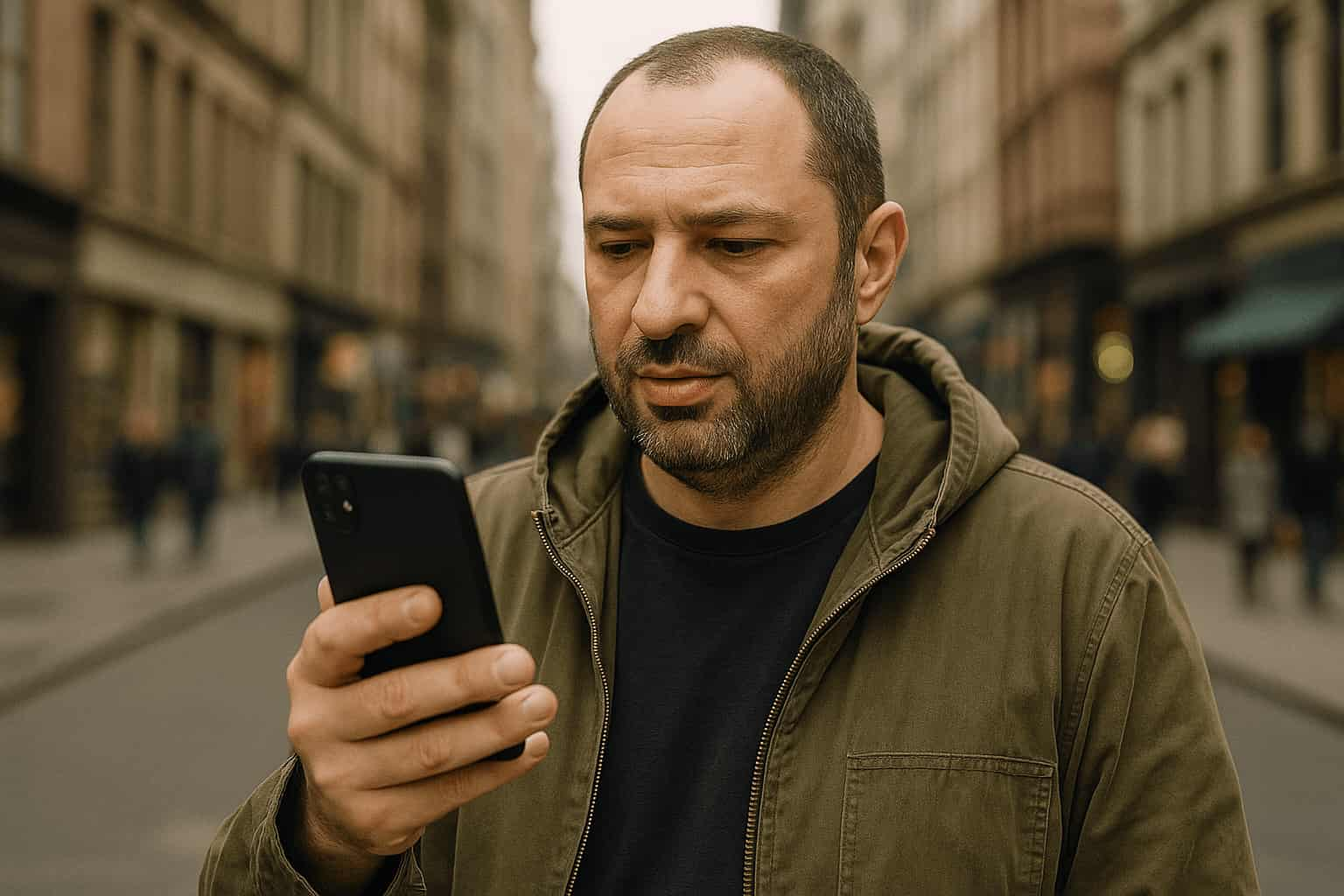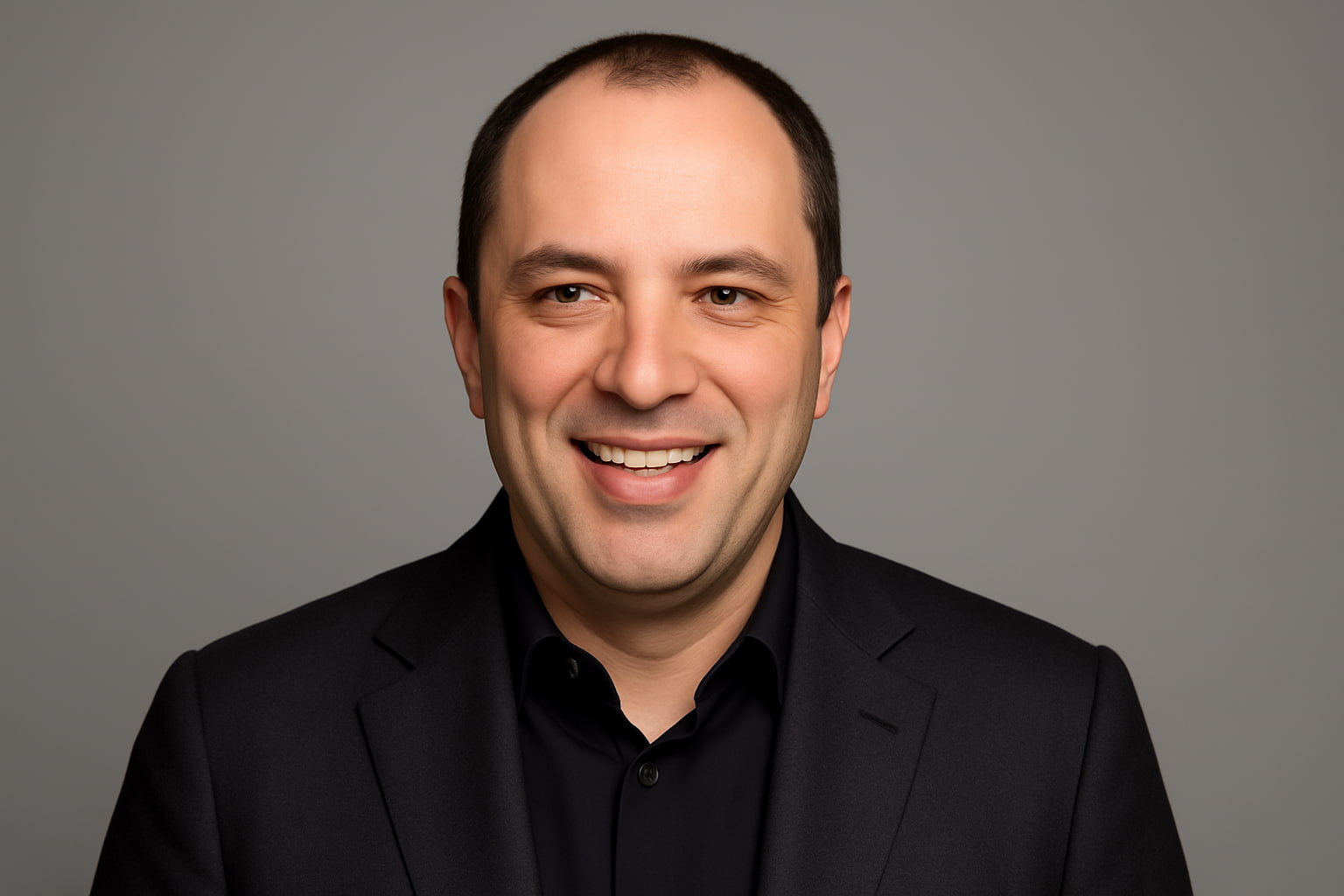Table of contents
Jan Koum transformed from a teenage food stamp recipient to a billionaire tech mogul in one of history’s most inspiring rags-to-riches stories. Born into poverty in Soviet-era Ukraine, this determined immigrant would co-found WhatsApp and revolutionize global communication. His journey embodies the American Dream while proving that extreme adversity can forge unbreakable determination.
Growing up under communist surveillance taught him the value of privacy. Losing his father and watching his mother battle cancer while living on welfare instilled resilience. Working menial jobs while teaching himself programming demonstrated his capacity for survival and self-improvement.
Understanding Koum’s story requires examining the formative experiences that shaped his worldview. The transformation from janitor to billionaire didn’t happen overnight. His path was marked by profound loss, financial hardship, and obstacles that would have broken lesser spirits.
Early Life & Struggles
The Ukrainian Childhood That Forged a Privacy Advocate

Born on February 24, 1976, in Kiev, Ukrainian Soviet Socialist Republic, Jan Borysovych Koum entered a world of surveillance and oppression. His Jewish family lived in Fastiv, facing constant anti-Semitic threats and communist monitoring. Father worked construction while mother managed their modest household without basic amenities like hot water.
Communist rule meant pervasive surveillance that left lasting psychological scars. Years later, Koum told Wired magazine: “I grew up in a society where everything you did was eavesdropped on, recorded, snitched on.” This childhood experience would become WhatsApp’s philosophical foundation for privacy protection.
Economic instability characterized the USSR’s final years, making basic survival challenging. Anti-Semitic sentiment added danger to daily life, making their Jewish heritage a source of fear rather than pride. These early experiences taught young Jan that privacy was precious and freedom couldn’t be taken for granted.
The Desperate Journey to America
When the Soviet Union collapsed in 1991, Koum’s mother recognized an escape opportunity. At sixteen, Jan immigrated with his mother and grandmother to Mountain View, California, in 1992. They relied on social support programs to secure a small two-bedroom apartment, starting over with nothing but hope.
American reality proved harsh initially. Koum’s father planned to join later but never made the journey, remaining in Ukraine until his death in 1997. This abandonment left the family emotionally and financially devastated in their new country.
Tragedy compounded when his mother received a cancer diagnosis shortly after arrival. Medical bills mounted while her ability to work diminished rapidly. Federal assistance became essential for survival, including welfare, food stamps, and government housing programs.
Working Through Poverty and Loss
Poverty forced teenage Jan to supplement the family’s meager income through manual labor. He worked as a janitor at a grocery store, cleaning floors and stocking shelves while peers enjoyed typical teenage activities. The irony wasn’t lost that he was literally cleaning up after the American prosperity he’d traveled so far to find.
His mother worked as a babysitter when health permitted, maintaining dignity despite their circumstances. Hospital visits became frequent as her condition worsened, creating enormous stress for the teenager navigating complex healthcare systems. Medical debt accumulated while he tried maintaining his education simultaneously.
Devastating loss struck in 2000 when his mother died after her cancer battle. At twenty-four, Koum found himself truly alone in America, having lost both parents while carrying the weight of their sacrifices. Grief was overwhelming, but it crystallized his resolve to honor their memory through success.
Turning Points
Self-Education and the Discovery of Programming

Despite poverty, Koum possessed innate curiosity that refused suppression by circumstances. Two years after immigration, at eighteen, he discovered computer programming and found his calling. This wasn’t casual interest but obsession offering intellectual stimulation and potential economic salvation.
Without expensive courses or tutors, Koum taught himself programming through books and online resources. He studied late into nights after completing janitorial duties, learning networking, security, and scalability concepts. “I had so much fun in the early days learning about networking, security, scalability, and other geeky stuff,” he told Reuters.
Programming skills opened doors previously unimaginable while cleaning grocery stores. The transformation from manual laborer to technology professional proved that intelligence and determination could overcome economic disadvantage. Self-taught expertise became the foundation for everything that followed.
Cybersecurity entry came through joining w00w00, an elite hacking group founded in 1996. This think tank focused on understanding and improving computer security systems rather than criminal activity. Through w00w00, he met future Napster creators, introducing him to the broader technology community and entrepreneurial possibilities.
Breaking Into the Tech Industry
While attending San Jose State University, Koum landed a security tester position at Ernst & Young. This role represented his first legitimate technology industry entry, providing income and professional experience validating his self-taught skills. The job required identifying computer system vulnerabilities, perfectly suiting his detail-oriented nature.
At Ernst & Young, Koum met Brian Acton, a Stanford-educated programmer who became his business partner and lifelong friend. Their immediate connection was based on shared technology interests and similar work ethics. Acton’s formal education complemented Koum’s street-smart problem-solving approach, creating a balanced partnership.
Career demands eventually forced a difficult education decision. After only one year at San Jose State, he quit school to focus on work, joining successful college dropouts like Mark Zuckerberg and Jack Dorsey. This decision reflected his practical life approach: real-world experience and income took precedence over formal education.
Yahoo hired Koum as an infrastructure engineer in 1997, providing a significant career leap. This position at an internet pioneer company offered exposure to large-scale systems and industry leaders. More importantly, it reunited him with Brian Acton, strengthening their professional relationship for the future.
The Yahoo Years and Growing Restlessness
Koum and Acton spent nearly a decade at Yahoo from 1997 to 2007, witnessing the company’s rise and gradual decline. These years provided invaluable experience building systems serving millions of users, knowledge proving crucial for WhatsApp’s later creation. However, Yahoo’s struggle to maintain relevance created frustration with corporate bureaucracy.
Leaving Yahoo wasn’t decided lightly, as both men had achieved financial stability and professional recognition. However, they felt unfulfilled by their work and yearned for greater challenges and creative freedom. Shared dissatisfaction created the foundation for their eventual entrepreneurial partnership and future success.
September 2007 brought their simultaneous Yahoo departure on Halloween, followed by year-long South American travel. This sabbatical allowed decompression from corporate stress while exploring new cultures and contemplating career moves. They played ultimate frisbee while discussing potential business opportunities during their travels.
Both men applied for Facebook positions during their travels, but their applications were rejected. This rejection proved ironically fortuitous later, as Facebook employment might have prevented WhatsApp’s creation. The rejection redirected their path toward entrepreneurship and eventual billionaire status.
Breakthrough Success
The iPhone Moment and WhatsApp’s Conception

Returning to America in early 2009, Koum and Acton faced a crucial decision between joining established companies or venturing into entrepreneurship. The choice clarified when Koum purchased an iPhone in January 2009, recognizing the transformative potential of Apple’s seven-month-old App Store platform.
iPhone capabilities sparked Koum’s imagination, but his app idea was deeply personal, rooted in expensive international communication experiences. As a teenager, staying in touch with family members was prohibitively expensive, creating painful relationship barriers across borders. He envisioned a cross-platform messaging application making communication accessible and affordable worldwide.
Koum discussed his concept with Alex Fishman, who helped refine the vision and connected him with a Russian developer for front-end building. The name “WhatsApp” came immediately because it sounded like “what’s up,” capturing the intended spirit of easy, informal communication between friends and family.
February 24, 2009, Koum’s thirty-third birthday, marked WhatsApp Inc.’s incorporation in California. This date held special significance, aligning his personal milestone with his professional leap of faith. The timing seemed auspicious for transforming from employee to entrepreneur on his birthday.
Early Struggles and the Push Notification Revolution
WhatsApp launched May 3, 2009, just months after conception, but initial reception was disappointing. The app struggled gaining traction with few downloads and minimal user engagement. Koum faced familiar failure specters, wondering if he’d made a catastrophic mistake leaving employment security for entrepreneurship uncertainty.
Everything changed in June 2009 when Apple introduced push notifications for iPhone apps. This technical update revolutionized WhatsApp’s functionality and user experience completely. Koum immediately recognized the opportunity and reworked his app to “ping” users when receiving messages, creating immediate and engaging communication experiences.
Push notifications transformed WhatsApp from static messaging boards into dynamic communication tools. Koum and Fishman’s Russian-speaking Bay Area friends began using the app extensively, creating the initial user base driving organic growth. Word-of-mouth recommendations proved more valuable than any marketing campaign could provide.
Recognizing the app’s potential and needing additional expertise, Koum convinced Brian Acton to join the venture. Acton, unemployed since leaving Yahoo, brought crucial business acumen and secured $250,000 in seed funding. Koum granted Acton co-founder status, formalizing their partnership and shared company commitment.
Scaling Challenges and Strategic Decisions
WhatsApp’s rapid growth created opportunities and challenges testing the founders’ resolve and business acumen. App popularity surged, but operating costs mounted quickly, particularly SMS verification text expenses costing thousands monthly while generating only $5,000 monthly profit during 2010.
Both founders made significant personal sacrifices during early years, refusing salaries and investing life savings into the company. This commitment demonstrated their belief in WhatsApp’s potential while creating enormous personal financial pressure. They literally bet their futures on the app’s success without safety nets.
The company experimented with various business models to achieve profitability while maintaining user growth. They discovered free apps generated massive downloads—up to 10,000 daily—but paid models reduced downloads to about 1,000 daily. This experimentation helped understand user behavior and find optimal growth-revenue balance.
Eventually, WhatsApp settled on ninety-nine cent annual subscription fees after the first free year. This model provided predictable revenue while keeping service accessible worldwide, including developing countries where communication costs were particularly burdensome. Pricing strategy reflected Koum’s original vision of affordable communication for everyone.
Key Business Moves
The Sequoia Partnership and Scaling Strategy

As WhatsApp demonstrated consistent growth and user engagement, venture capitalists expressed funding interest for company expansion. However, Koum and Acton approached potential investors with extreme caution, determined to maintain control over company direction and values. They were particularly adamant about their no-advertising policy stance.
Jim Goetz from Sequoia Capital emerged as the ideal investor partner, understanding and supporting the founders’ vision for ad-free messaging platforms. Sequoia invested $8 million in WhatsApp during 2011, followed by additional $50 million in 2013. These investments provided capital for infrastructure improvements and international growth.
Additional funding enabled WhatsApp to upgrade office space, hire critical technical talent, and implement essential fixes and new features. More importantly, it provided resources for handling explosive user growth effectively. Between April 2013 and February 2014, WhatsApp added 265 million users, demonstrating unprecedented messaging app market growth.
Koum and Acton’s scaling approach was methodical and user-focused rather than revenue-driven exclusively. They prioritized service reliability and user experience over rapid monetization, building loyal user bases valuing the app’s simplicity and effectiveness. This strategy created sustainable growth attracting major technology company acquisition interest.
The Facebook Acquisition Negotiations
By 2014, WhatsApp had become impossible for major technology companies to ignore completely. The app’s user base grew exponentially while its influence on global communication patterns was undeniable. Facebook CEO Mark Zuckerberg recognized WhatsApp’s strategic importance and began pursuing acquisition discussions with increasing intensity.
Negotiation processes culminated in Zuckerberg’s dinner invitation to Koum’s home on February 9, 2014. During this meeting, Zuckerberg formally proposed that Koum join Facebook’s board of directors as part of an acquisition deal. The offer represented validation of everything Koum had built throughout his entrepreneurial journey.
Ten days after that dinner, February 19, 2014, Facebook announced its WhatsApp acquisition for $19.3 billion, making it one of history’s largest technology acquisitions. Deal structure included $4 billion cash, $12 billion Facebook shares, and $3 billion restricted stock units for WhatsApp employees.
The acquisition’s symbolic significance wasn’t lost on anyone involved in the negotiations. Koum signed the Facebook deal in the same building where he’d once collected food stamps with his mother. This moment encapsulated the American Dream’s promise that hard work and determination can overcome any obstacle.
Post-Acquisition Challenges and Departure
Despite the acquisition’s financial success, integrating WhatsApp into Facebook’s ecosystem proved challenging for Koum and Acton. Their commitment to user privacy and ad-free service conflicted with Facebook’s advertising-driven business model and data collection practices. These philosophical differences created increasing tension over time.
Over 2016’s first half, Koum sold more than $2.4 billion worth of Facebook stock, representing approximately half his total holdings. This divestment suggested growing discomfort with Facebook’s direction and his role within the larger organization. Sales provided financial security while reducing dependence on Facebook’s continued success.
Tension reached breaking points in April 2018 when Koum announced his departure from WhatsApp and resignation from Facebook’s board of directors. His decision was attributed to disputes over WhatsApp’s future direction, particularly regarding user privacy protections and advertising integration. Departure represented principled stands prioritizing values over financial gain.
Initially, observers believed Koum’s departure would cost him nearly $1 billion in unvested stock options. However, it was later discovered he remained formally employed by Facebook through “rest and vest” arrangements, earning approximately $450 million in stock compensation while distancing himself from operations.
Legacy & Lessons Learned
The Privacy-First Philosophy That Changed Messaging

Koum’s most enduring legacy lies not in WhatsApp’s financial success but in its revolutionary approach to user privacy and data protection. His childhood experiences under Soviet surveillance created unshakeable commitment to protecting user communications from government and corporate intrusion. This philosophy became WhatsApp’s defining characteristic.
WhatsApp’s end-to-end encryption, implemented before becoming industry standard, demonstrated that privacy protection and commercial success weren’t mutually exclusive. The app’s billion-plus users could communicate freely without surveillance fears, a freedom Koum had been denied during his Ukrainian childhood. This achievement represented personal vindication and global progress.
Privacy-first approaches also influenced other technology companies to prioritize user data protection more seriously. WhatsApp’s success proved consumers valued privacy and were willing to adopt platforms protecting their personal information. This market validation encouraged broader industry adoption of encryption and privacy-focused features.
Koum’s stance on advertising further distinguished WhatsApp from competitors and social media platforms significantly. His absolute refusal to monetize user data through targeted advertising created sustainable business models based on subscription fees rather than surveillance capitalism. This approach demonstrated alternative profitability paths in technology industries.
Entrepreneurial Lessons from Extreme Adversity
Koum’s journey offers profound lessons about entrepreneurship, resilience, and relationships between personal experience and business innovation. His story demonstrates that extreme adversity can become competitive advantage when channeled into purposeful action. Poverty, loss, and struggle provided motivation and perspective that privileged entrepreneurs often lack.
Self-education importance emerges as a crucial theme in Koum’s success story. His ability to teach himself programming while working menial jobs illustrates the power of intellectual curiosity and persistent learning. Self-directed education proved more valuable than formal degrees, providing practical skills contributing directly to WhatsApp’s development.
Partnership dynamics also played crucial roles in Koum’s success throughout his entrepreneurial journey. His collaboration with Brian Acton demonstrated how complementary skills and shared values can create synergistic relationships exceeding individual capabilities. Their friendship provided emotional support while their professional partnership balanced technical expertise with business acumen.
Entrepreneurial venture timing emerges as another critical factor in achieving success. Koum’s recognition of iPhone and App Store potential illustrates the importance of identifying technological inflection points and acting decisively. His ability to connect personal experience with market opportunity created the foundation for WhatsApp’s eventual success.
Philanthropy and Giving Back
Success brought Koum opportunities to address causes reflecting his personal values and experiences. Through the Koum Family Foundation, he donated $1.15 billion in Facebook stock to various charitable causes, demonstrating commitment to using wealth for positive social impact. His philanthropic approach focused on supporting communities resonating with his background.
Koum’s donations to Jewish and Israeli causes reflected his heritage and anti-Semitic persecution his family faced in Ukraine. His contributions to organizations like the European Jewish Association supported communities facing similar challenges to those his family experienced. These donations represented both personal healing and community support.
His support for technology education and development, including donations to The FreeBSD Foundation, demonstrated commitment to advancing open-source software that enabled his learning and success. These contributions helped ensure future generations of self-taught programmers would have access to necessary tools and resources.
During the 2022 Russian invasion of Ukraine, Koum donated $27.6 million to support relief efforts, directly addressing ongoing suffering in his homeland. This response illustrated how personal experience with displacement and persecution created lasting empathy for others facing similar challenges worldwide.
The Broader Impact on Global Communication

WhatsApp’s influence extended far beyond commercial success, fundamentally changing how people communicate across geographic, economic, and cultural boundaries. The app’s affordability and accessibility democratized international communication, enabling families separated by immigration to maintain relationships that distance and cost might otherwise have severed.
In developing countries, WhatsApp became essential infrastructure for both personal and business communication needs. Small businesses used the platform to reach customers, families coordinated across vast distances, and communities organized around shared interests and concerns. This impact reflected Koum’s original vision of making communication accessible regardless of economic circumstances.
The app’s influence on political and social movements worldwide demonstrated technology’s power to enable grassroots organization and information sharing. From Arab Spring protests to local community organizing, WhatsApp provided secure communication channels that governments and corporations couldn’t easily monitor or control effectively.
WhatsApp’s success also influenced the broader technology industry’s approach to messaging and privacy protection. Competitors adopted similar features and privacy protections, raising industry standards and user expectations significantly. The app’s impact extended beyond its own user base to improve communication privacy and security across multiple platforms.
Jan Koum’s story reminds us that the American Dream remains achievable for those willing to combine determination with opportunity. His journey from Ukrainian poverty to Silicon Valley success illustrates how personal adversity can become professional advantage when channeled through education, hard work, and principled decision-making. Most importantly, his commitment to privacy and user protection demonstrates that commercial success and social responsibility can coexist.
For entrepreneurs facing their own challenges, Koum’s story provides both inspiration and practical guidance for success. Success requires more than good ideas; it demands persistence through failure, strategic partnerships, and courage to prioritize values over short-term profits. His legacy continues influencing how we think about privacy, communication, and responsibility that comes with technological power.
- From Housing Projects to Fortune 500: The Extraordinary Rise of Ursula Burns
- About The Phoenix Ascent
- From Brooklyn Projects to Billion-Dollar Empire: The Extraordinary Rags-to-Riches Journey of Howard Schultz
- From Fax Machines to Fortune: Sara Blakely’s Extraordinary Journey to Billionaire Status
- From Desert Sands to Billion-Dollar Empire: The Extraordinary Journey of Mohed Altrad
This article explores the remarkable journey of Jan Koum and his creation of WhatsApp. For more inspiring rags-to-riches stories of entrepreneurs who overcame extreme adversity, visit The Phoenix Ascent where we celebrate the triumph of human determination over seemingly impossible odds.
For additional information about Jan Koum’s life and career, visit his Wikipedia page for comprehensive biographical details and references.

